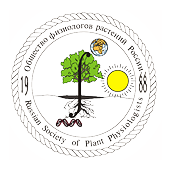Новости науки и практики // Февраль 2024

A simple and efficient in planta transformation method based on the active regeneration capacity of plants
Plant genetic transformation strategies serve as essential tools for the genetic engineering and advanced molecular breeding of plants. However, the complicated operational protocol and low efficiency of the current transformation strategies restrict the genetic modification of most plant species. This paper describes the development of a Regenerative Activity-dependent in Planta Injection Delivery (RAPID) method based on the active regeneration capacity of plants.
Spatiotemporal oxygen dynamics in young leaves reveal cyclic hypoxia in plants
Oxygen is essential for plant growth and development. Hypoxia occurs in plants due to limited oxygen availability following adverse environmental conditions as well in hypoxic niches in otherwise normoxic environments. However, the existence and functional integration of spatiotemporal oxygen dynamics with plant development remains unknown. In animal systems dynamic fluctuations in oxygen availability are known as cyclic hypoxia. In this study, Triozzi et al. demonstrate that cyclic fluctuations in internal oxygen levels occur in young emerging leaves of Arabidopsis.
New study unveils how plants control the production of reactive oxygen species
Reactive oxygen species (ROS), though generally regarded as toxic byproducts of biological processes, serve many important functions in plants. However, the precise mechanism that plants use to regulate the production of ROS remains elusive. In a recent study, researchers from Japan clarified how an important ROS-generating enzyme is activated, revealing mechanisms likely conserved across all land plants. Their findings could pave the way for breakthroughs in agricultural and environmental remediation tools.
https://www.eurekalert.org/news-releases/1032102
Sweet and fatty symbionts: photosynthetic productivity and carbon storage boosted in microalgae within a host
Symbiosis between a host and intracellular eukaryotic microalgae is a widespread life strategy in aquatic ecosystems. This partnership is considered to be mainly energized by the photosynthetically-derived carbon energy of microalgal symbionts. A major question is whether microalgae increase their photosynthetic production and decrease carbon storage in order to maximize carbon translocation to their host. By combining three-dimensional subcellular imaging and physiological analyses, Catacora-Grundy et al. show that the photosynthetic machinery (chloroplast and CO2-fixing pyrenoid) of the symbiotic microalga Micractinium conductrix significantly expands inside their host (the ciliate Paramecium bursaria) compared to the free-living state.
https://www.biorxiv.org/content/10.1101/2023.12.22.572971v1?utm_source=substack&utm_medium=email
Extreme drought impacts have been underestimated in grasslands and shrublands globally
Drought has well-documented societal and economic consequences. Climate change is expected to intensify drought to even more extreme levels, but because such droughts have been historically rare, their impact on ecosystem functioning is not well known. Smith et al. experimentally imposed the most frequent type of intensified drought—one that is ~1 y in duration—at 100 grassland and shrubland sites distributed across six continents. They found that loss of aboveground plant growth, a key measure of ecosystem function, was 60% greater when short-term drought was extreme (≤1-in-100-y historical occurrence).
https://www.pnas.org/doi/10.1073/pnas.2309881120?utm_source=substack&utm_medium=email
Talking tomatoes: How their communication is influenced by enemies and friends
Plants produce a range of chemicals known as volatile organic compounds that influence their interactions with the world around them. In a new study, researchers at the University of Illinois Urbana-Champaign investigated how the type and amount of these VOCs change based on different features of tomato plants.
https://www.eurekalert.org/news-releases/1032255
HY5: a key regulator for light-mediated nutrient uptake and utilization by plants
ELONGATED HYPOCOTYL 5 (HY5), a bZIP-type transcription factor, is a master regulator of light-mediated responses. ELONGATED HYPOCOTYL 5 binds to the promoter of c. 3000 genes, thereby regulating various physiological and biological processes, including photomorphogenesis, flavonoid biosynthesis, root development, response to abiotic stress and nutrient homeostasis. In recent decades, it has become clear that light signaling plays a crucial role in promoting nutrient uptake and assimilation.
https://nph.onlinelibrary.wiley.com/doi/10.1111/nph.19516?utm_source=substack&utm_medium=email
Keys to aging hidden in the leaves
Scientists have known about a particular organelle in plant cells for over a century. However, UC Riverside scientists have only now discovered that organelle’s key role in aging.
https://www.eurekalert.org/news-releases/1031623
Extracellular niche establishment by plant pathogens
The plant extracellular space, referred to as the apoplast, is inhabited by a variety of microorganisms. Reflecting the crucial nature of this compartment, both plants and microorganisms seek to control, exploit and respond to its composition. Upon sensing the apoplastic environment, pathogens activate virulence programmes, including the delivery of effectors with well-established roles in suppressing plant immunity. Roussin-Léveillée et al. posit that another key and foundational role of effectors is niche establishment — specifically, the manipulation of plant physiological processes to enrich the apoplast in water and nutritive metabolites.
ReadCube: https://rdcu.be/dvYaK
Illuminating plant water dynamics: the role of light in leaf hydraulic regulation
Light intensity and quality influence photosynthesis directly but also have an indirect effect by increasing stomatal apertures and enhancing gas exchange. Consequently, in areas such as the upper canopy, a high water demand for transpiration and temperature regulation is created. This paper explores how light intensity and the natural high Blue-Light (BL) : Red-Light (RL) ratio in these areas, is important for controlling leaf hydraulic conductance (Kleaf) by BL signal transduction, increasing water permeability in cells surrounding the vascular tissue, in supporting the enormous water demands.
https://nph.onlinelibrary.wiley.com/doi/10.1111/nph.19497?utm_source=substack&utm_medium=email
A new type of plant metalloreductase maintains root growth under low phosphorus
Phosphorus is essential for undisturbed plant growth and development. However, in many soils, phosphorus is only poorly available. One mechanism used by plants to increase phosphorus availability is the release of malate, an organic acid, which can form complexes with iron or aluminium in the soil, thereby liberating sorbed phosphate. However, this response can also result in iron overaccumulation, which can inhibit root growth. An international research team led by the IPK Leibniz Institute found out that the protein HYP1, a member of a yet poorly characterized family of electron transporters, helps to protect roots from increased iron reactivity induced in response to phosphorus deficiency. Today, the results were published in the jounal "Nature Communications".
https://www.eurekalert.org/news-releases/1030994
A suberized exodermis is required for tomato drought tolerance
Plant roots integrate environmental signals with development using exquisite spatiotemporal control. This is apparent in the deposition of suberin, an apoplastic diffusion barrier, which regulates flow of water, solutes and gases, and is environmentally plastic. Suberin is considered a hallmark of endodermal differentiation but is absent in the tomato endodermis. Instead, suberin is present in the exodermis, a cell type that is absent in the model organism Arabidopsis thaliana. Here we demonstrate that the suberin regulatory network has the same parts driving suberin production in the tomato exodermis and the Arabidopsis endodermis.
https://www.nature.com/articles/s41477-023-01567-x?utm_source=substack&utm_medium=email
Optimizing leaf hydration potentially improving agricultural practices
Researchers from Hebrew University have unveiled the intricate connection between light conditions, Blue-Light (BL) to Red-Light (RL) ratio, and leaf hydraulic conductance (Kleaf) in different canopy areas. The study shows that light not only directly impacts photosynthesis but also indirectly affects water demands and hydraulic conductance. These findings offer insights into plant adaptive strategies, potentially improving agricultural practices, especially in water management for better crop productivity.
https://www.eurekalert.org/news-releases/1031666
A window into plant evolution: The unusual genetic journey of lycophytes
An international team of researchers has uncovered a remarkable genetic phenomenon in lycophytes, which are similar to ferns and among the oldest land plants. Their study, recently published in the journal PNAS, reveals that these plants have maintained a consistent genetic structure for over 350 million years, a significant deviation from the norm in plant genetics.
https://www.eurekalert.org/news-releases/1031775
Pacific kelp forests are far older that we thought
Fossils of kelp along the Pacific Coast are rare. Until now, the oldest fossil dated from 14 million years ago, leading to the view that today's denizens of the kelp forest — marine mammals, urchins, sea birds — coevolved with kelp. A recent amateur discovery pushes back the origin of kelp to 32 million years ago, long before these creatures appeared. A new analysis suggests the first kelp grazers were extinct, hippo-like animals called desmostylians.
Новости
Новости науки и практики // Апрель 2024
Обзор научных новостей, опубликованных во всемирной паутине за последний месяцФосфорилирование плазматической мембраны H+-АТФазы Thr881 (треонин) участвует в светоиндуцированном открывании устьиц
Ученые из Университета Нагои (Nagoya University) и Института трансформирующих биомолекул (WPI-ITbM) обнаружили новый ...Научная конференция «Photosynthesis and Hydrogen Energy Research for Sustainability – 2024»
Приглашаем Вас принять участие в XII международной научной конференции


Объявления
Записей не найдено.



